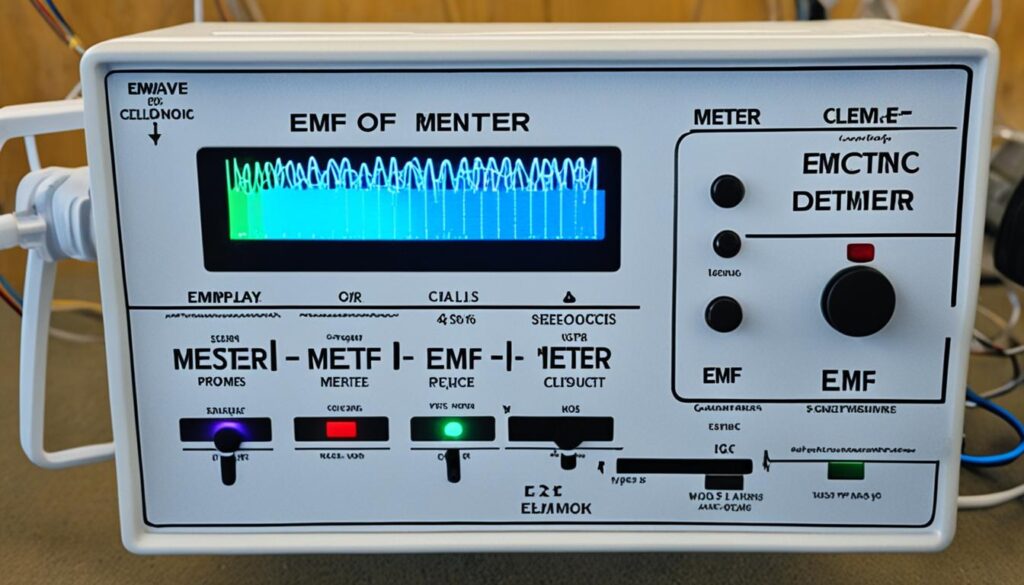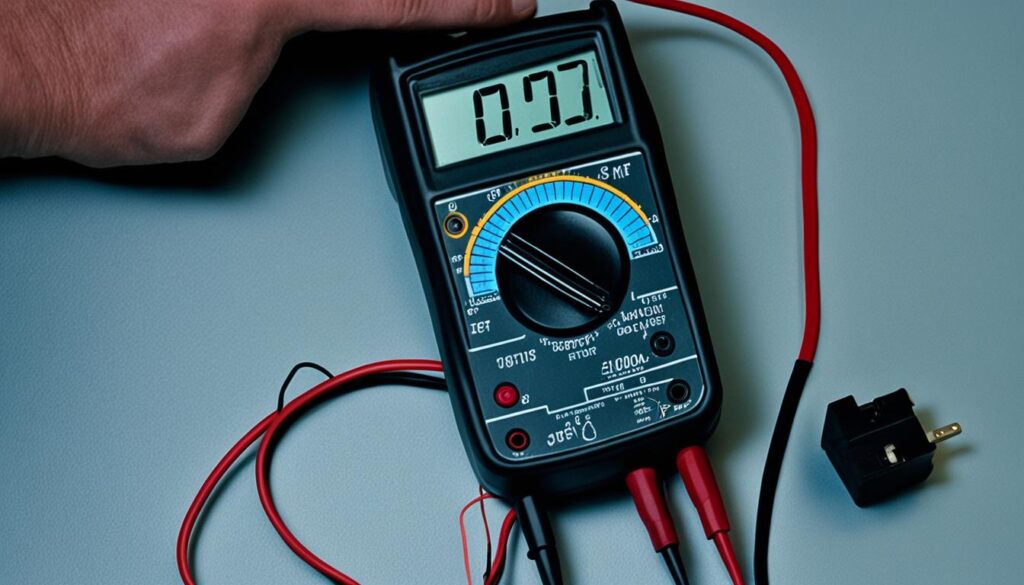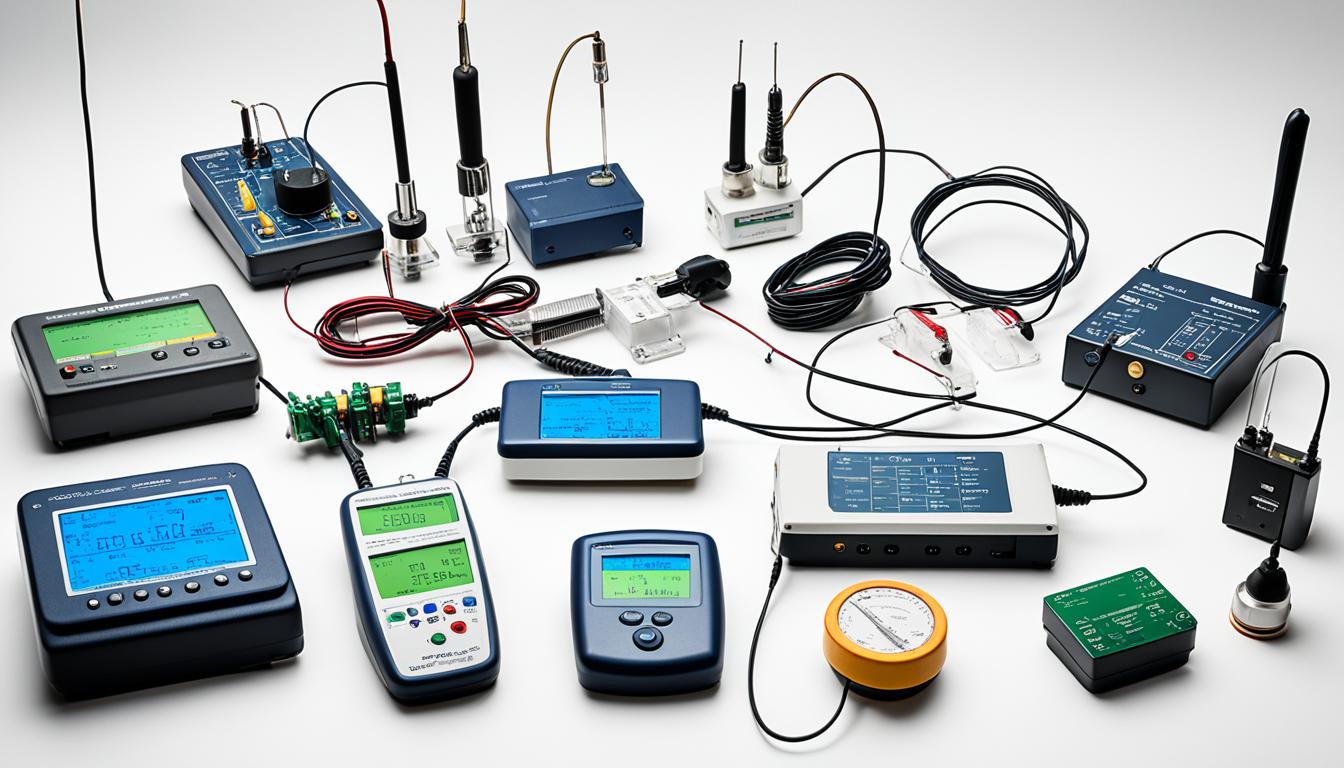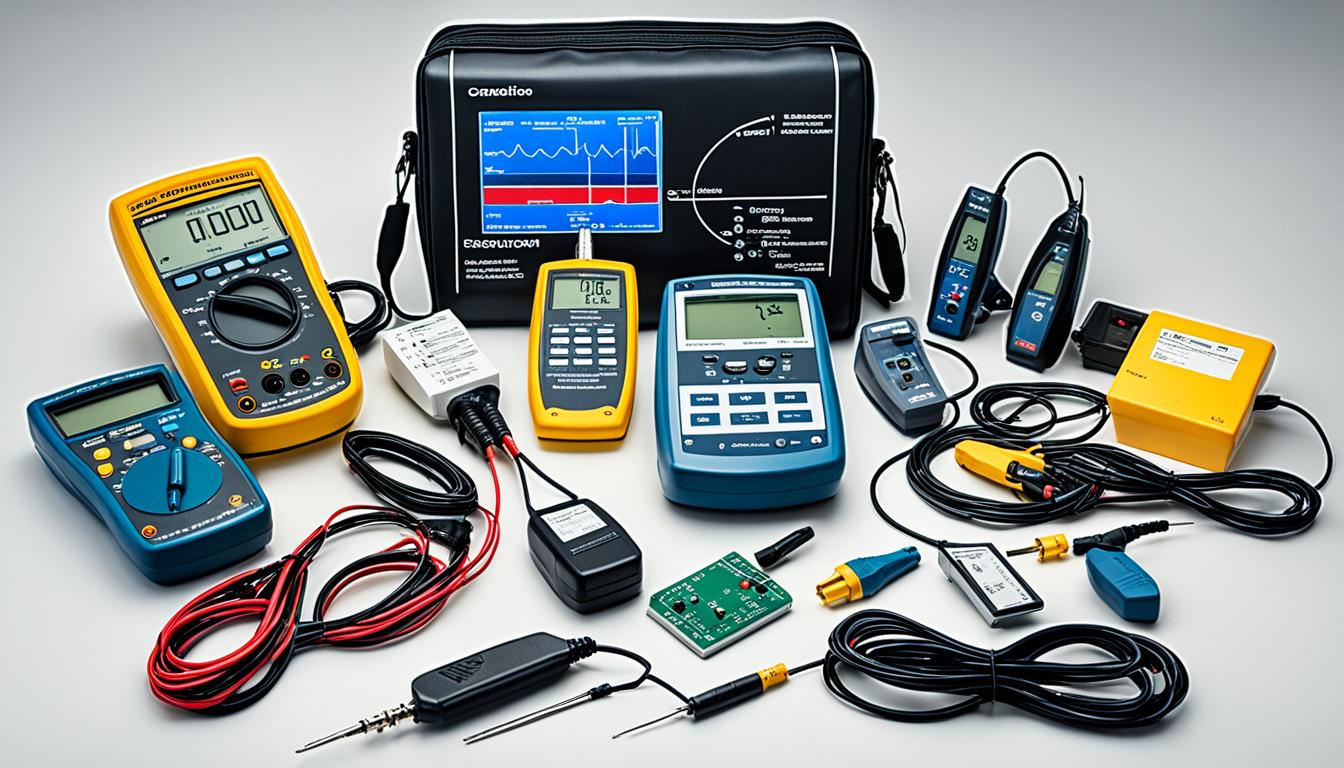Disclosure: This Post Contains Affiliate Links; We earn a commission on purchases.
Welcome to our comprehensive guide on understanding EMF measurements. In this article, we will delve into the world of electromagnetic field measurements, exploring the different techniques, devices, and safety guidelines associated with EMF radiation detection. Whether you are concerned about your exposure to EMF or are simply curious about this fascinating field, we aim to provide you with a detailed explanation that will clarify any uncertainties you may have.
EMF measurements play a vital role in assessing and monitoring the levels of electromagnetic radiation present in our environment. With the proliferation of electronic devices and wireless technologies, it is essential to have a solid understanding of EMF and its potential effects on our health.
Throughout this article, we will explore the various EMF measurement devices and their features, including the different types of EMF meters used for precise measurements. We will also discuss the significance of electromotive force (EMF) and how it relates to the measurement of electromagnetic fields.
Additionally, we will cover the techniques used to measure EMF radiation, whether it’s high frequency or low frequency radiation. Understanding how to use radiation meters correctly will enable you to identify potential sources of radiation and take necessary precautions to minimize your exposure.
Finally, we will highlight the benefits of EMF measurements and their role in promoting a safer living and working environment. By implementing the recommended EMF reduction tips and protective measures, you can greatly reduce your exposure to electromagnetic radiation and maintain a healthier lifestyle.
Key Takeaways:
- EMF measurements are essential for understanding electromagnetic radiation and its potential impact on our health.
- EMF meters are scientific instruments used to measure electromagnetic fields, providing precise and accurate readings.
- There are different types of EMF meters available, including single-axis, tri-axis, and active sensors, each with its own features and applications.
- Electromotive force (EMF) is the potential difference between two electrodes in an electrochemical cell, and it plays a crucial role in understanding and measuring electromagnetic fields.
- Radiation meters are used to measure both high and low frequency electromagnetic fields and can help identify sources of radiation in our environment.
Types of EMF Measurements
When it comes to measuring electromagnetic fields (EMF), there are different methods and tools available. Understanding the types of EMF measurements is crucial for accurate and reliable results. In this section, we will explore two main categories of EMF measurements: broadband measurements and frequency selective measurements.
Broadband Measurements
Broadband measurements involve capturing signals across a wide range of frequencies. These measurements are commonly performed using a broadband probe. The broadband probe consists of three independent diode detectors that allow for simultaneous measurement of electromagnetic signals in different frequency bands. This type of measurement provides a comprehensive overview of the overall EMF levels in a given environment.
Frequency Selective Measurements
Frequency selective measurements focus on monitoring specific frequency ranges. Instead of using a broadband probe, this type of measurement utilizes a field antenna and a frequency selective receiver or spectrum analyzer. The field antenna picks up electromagnetic signals within the desired frequency range, while the receiver or spectrum analyzer analyzes and displays the measurements. Frequency selective measurements are useful for detecting and analyzing EMF signals from specific sources or frequencies of interest.
EMF probes play a crucial role in accurate measurements. They can be categorized as either isotropic (tri-axial) or mono-axial probes. Isotropic probes measure EMF fields in three dimensions, providing more comprehensive data on the field’s intensity and direction. Tri-axial probes are commonly used in various EMF applications. Mono-axial probes, on the other hand, measure fields on a single axis, limiting the measurement to one specific direction.
Some EMF probes also come with active components, known as active probes. These probes enhance measurement precision and sensitivity, allowing for more accurate and detailed EMF measurements. Active probes are particularly beneficial when detecting low-level EMF signals or when high measurement accuracy is required.
Understanding the different types of EMF measurements and the tools involved is essential for accurate assessment and mitigation strategies. In the next section, we will delve into EMF meters and explore their features in more detail.
EMF Meters and Their Features
EMF meters are scientific instruments used to measure electromagnetic fields. These meters play a crucial role in assessing and monitoring EMF radiation levels. Understanding the features and capabilities of different EMF meters can help users make informed decisions when it comes to measuring and mitigating potential EMF exposure. Let’s explore some key aspects of EMF meters:
Types of EMF Meters
EMF meters come in various types, including:
- Single axis meters: These meters measure one dimension of the field at a time. To obtain a complete measurement, users need to tilt and turn the meter on all three axes. While single axis meters are more affordable, they require more effort to get accurate readings.
- Tri-axis meters: These meters measure all three axes simultaneously, providing a comprehensive assessment of the EMF radiation levels. Tri-axis meters are more convenient and efficient, making them the preferred choice for many users.
Sensitivity and Calibration
The sensitivity and calibration of EMF meters refer to their ability to detect and measure electromagnetic fields accurately. Most EMF meters are designed to measure 50 and 60 Hz alternating fields, which are commonly encountered in residential and commercial environments. It’s important to choose an EMF meter with appropriate sensitivity for the specific frequency range of interest.
Active and Passive Sensors
EMF meters can be equipped with either active or passive sensors:
- Active sensors: These sensors contain active components that enhance measurement precision and sensitivity. Active sensors are especially useful for detecting weak signals or when higher accuracy is required.
- Passive sensors: These sensors collect energy from the electromagnetic field being measured, eliminating the need for external power. Passive sensors offer simplicity and ease of use in various applications.
| EMF Meter Type | Advantages | Disadvantages |
|---|---|---|
| Single Axis Meter | More affordable | Requires tilting and turning for full measurement |
| Tri-Axis Meter | Measures all three axes simultaneously | May be more expensive |
| Active Sensors | Enhanced precision and sensitivity | May require external power |
| Passive Sensors | Simple and easy to use | Relies on energy from the field being measured |
By understanding the features and capabilities of different types of EMF meters, users can select the most suitable tool for their specific needs. Whether it’s a single axis meter or a tri-axis meter, choosing the right sensitivity and sensor type can lead to accurate and reliable EMF measurements, providing valuable insights for EMF radiation assessment and mitigation efforts.

Stay tuned for the next section where we will delve into the concept of electromotive force (EMF) and its significance in EMF measurements!
Understanding Electromotive Force (EMF)
Electromotive force (EMF) plays a fundamental role in the study of electrochemistry. It is the potential difference between two electrodes of an electrochemical cell, which drives the flow of electric charge.
An electrochemical cell consists of two electrodes, an anode, and a cathode. These electrodes are immersed in an electrolyte solution and connected by a bridge. The cell is contained in a container to prevent external interference.
The anode is where the oxidation reaction occurs, and it acts as the negative electrode in a galvanic cell. The cathode, on the other hand, is where the reduction reaction occurs and serves as the positive electrode.
EMF measurements are crucial in understanding the galvanic nature of a cell. By measuring the potential difference between the anode and cathode, we can determine the cell potential. This information allows us to calculate the number of cells required to achieve a specific voltage in a circuit.
Understanding EMF is essential for various applications, such as designing batteries, evaluating the efficiency of electrochemical reactions, and analyzing the behavior of corrosion processes.
Now, let’s take a closer look at the structure of an electrochemical cell and how EMF measurements are used to assess its properties.

Structure of an Electrochemical Cell
An electrochemical cell consists of the following components:
- Anode: The negative electrode where the oxidation reaction occurs.
- Cathode: The positive electrode where the reduction reaction occurs.
- Electrolyte Solution: A solution containing ions that facilitate the flow of electric charge.
- Bridge: A connection between the anode and cathode, allowing the flow of ions while preventing the mixing of the electrolyte solutions.
- Container: The physical enclosure that houses the electrochemical cell.
By understanding the structure and properties of an electrochemical cell, we can gain valuable insights into its behavior and utilize EMF measurements for practical applications.
Measuring EMF with Radiation Meters
When it comes to understanding electromagnetic fields (EMF) and assessing their potential impact on our health, radiation meters play a crucial role. These innovative devices allow us to measure and monitor both high and low-frequency radiation, providing valuable insights into the electric and magnetic fields that surround us.
High-frequency radiation meters are specifically designed to measure power density and electric field intensity emitted by wireless radiation sources. From cell towers to Wi-Fi modems and cell phones, these meters enable us to quantify the levels of high-frequency radiation in our environment. By understanding these measurements, we can make informed decisions to minimize our exposure and create safer spaces.
On the other hand, low-frequency radiation meters offer valuable information about electric and magnetic fields generated by power cables, transformers, and electrical devices. These meters can measure magnetic field flux density and electric field density, providing us with a comprehensive understanding of our exposure to these fields.
By utilizing radiation meters, we can gain valuable insights into the invisible world of electromagnetic fields and make informed decisions to minimize our exposure and protect our well-being.
These meters serve as a powerful tool to measure and assess electric and magnetic fields across a wide range of frequencies. By analyzing the data collected by radiation meters, we can identify potential hotspots and implement strategies to reduce our exposure to high-frequency radiation. Similarly, low-frequency radiation measurements help us in identifying and minimizing our exposure to electric and magnetic fields generated by power sources and electrical devices in our surroundings.
To paint a clearer picture of the capabilities of radiation meters, consider the following information:
| Radiation Meter Type | Measurement Capability |
|---|---|
| High-Frequency Radiation Meter | Measures power density and electric field intensity |
| Low-Frequency Radiation Meter | Measures electric and magnetic fields |
As we can see, radiation meters help us gauge the intensity of electromagnetic fields, shedding light on potential risks and assisting us in making informed choices. Armed with this knowledge, we can take appropriate steps to minimize our exposure to high-frequency radiation and optimize the safety of our environment.
Key Takeaways:
- Radiation meters enable us to measure both high and low-frequency electromagnetic fields.
- High-frequency radiation meters measure power density and electric field intensity, while low-frequency radiation meters measure electric and magnetic fields.
- These meters provide valuable insights into our exposure to electromagnetic fields from sources such as cell towers, Wi-Fi modems, power cables, and electrical devices.
- By utilizing radiation meters, we can identify potential hotspots and take appropriate measures to minimize our exposure for a safer environment.
Benefits of EMF Measurements and Protection
EMF measurements play a vital role in helping individuals reduce their radiation exposure and create a safer environment. By accurately identifying and addressing radiation sources, individuals can take proactive steps towards minimizing their risk. Here are some significant benefits of EMF measurements and protection:
Reduce Radiation Exposure
EMF measurements enable individuals to assess the level of electromagnetic radiation in their surroundings. By identifying and removing or replacing radiation sources, such as outdated appliances or electronics, individuals can significantly reduce their overall radiation exposure. This proactive approach helps safeguard their health and well-being.
Identify Radiation Sources
EMF measurements help pinpoint the specific sources of radiation in an environment. By using specialized EMF meters, individuals can identify hidden electromagnetic fields emitted by electronic devices, wiring, or antennas. This knowledge allows them to take appropriate actions to minimize unnecessary exposure and make informed decisions about their living and working spaces.
Avoid Hotspots
EMF measurements assist in identifying radiation hotspots, where radiation levels exceed recommended safety limits. By conducting thorough measurements, individuals can discover areas with elevated electromagnetic radiation, such as near power lines, transformers, or Wi-Fi routers. Avoiding these hotspots can significantly reduce overall radiation exposure and promote a healthier living environment.
Radiation Shielding
EMF measurements can help determine the effectiveness of radiation shielding materials. By assessing the attenuation capabilities of different shielding options, individuals can make informed choices about implementing effective shielding solutions. These materials, such as metallic foils or special fabrics, work by blocking or redirecting electromagnetic radiation, reducing exposure levels in specific areas.
Implementing these measures can result in lower radiation levels and create a safer environment for individuals, whether in homes, workplaces, or public spaces. By being aware of the potential sources of radiation, taking proactive steps to reduce exposure, and utilizing radiation shielding when necessary, individuals can effectively protect themselves and their loved ones.
Conclusion
In conclusion, understanding EMF measurements is crucial for safeguarding against the potential risks of electromagnetic radiation exposure. EMF meters play a vital role in accurately measuring and detecting electromagnetic fields, providing valuable insights into the levels of electromagnetic radiation present in our environment.
By utilizing EMF meters and adhering to established safety guidelines, individuals can take proactive steps to reduce their exposure levels and protect their overall health and well-being. Armed with the knowledge of EMF measurements, individuals can make informed decisions regarding the placement of electronic devices, the use of shielding materials, and other measures to minimize potential risks.
Increasing awareness and understanding of EMF measurements is key to creating a safe environment in both homes and workplaces. By incorporating EMF meters into our daily lives, we can actively manage and mitigate our exposure to electromagnetic radiation, ensuring a healthier and safer living and working environment for ourselves and our loved ones.
Source Links
- https://en.wikipedia.org/wiki/EMF_measurement
- https://www.chemicals.co.uk/blog/measuring-the-emf-of-an-electrochemical-cell
- https://www.home-biology.com/electromagnetic-field-radiation-meters/how-to-measure-electromagnetic-radiation

Subscribe to Our Newsletter








